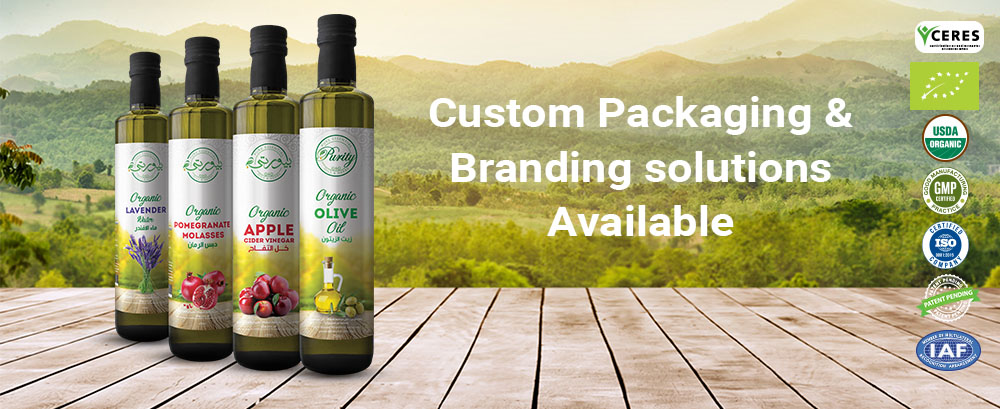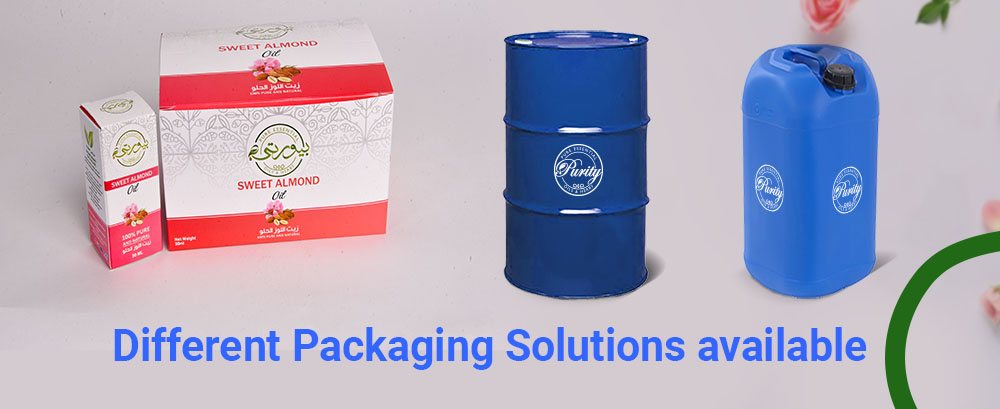Best Seller Items
-
Coconut Oil Organic & Conventional Consumer Pack
Coconut oil comes from the nut (fruit) of the coconut palm. The oil of the nut is used to make medicine. Some coconut oil products are referred to as “virgin” coconut oil. Unlike olive oil, there is no industry standard for the meaning of “virgin” coconut oil. The term has come to mean that the oil is generally unprocessed. For example, virgin coconut oil usually has not been bleached, deodorized, or refined.
Some coconut oil products claim to be “cold pressed” coconut oil. This generally means that a mechanical method of pressing out the oil is used, but without the use of any outside heat source. The high pressure needed to press out the oil generates some heat naturally, but the temperature is controlled so that temperatures do not exceed 120 degrees Fahrenheit.
People use coconut oil for eczema (atopic dermatitis). It is also used for scaly, itchy skin (psoriasis), obesity, and other conditions, but there is no good scientific evidence to support these uses.
How does it work ?
Coconut oil contains a certain kind of fat known as “medium chain triglycerides.” Some of these fats work differently than other types of saturated fat in the body. When applied to the skin, coconut oil has a moisturizing effect.Login to view pricesCoconut Oil Organic & Conventional Consumer Pack
Login to view prices -
Argan Oil Organic & Conventional Consumer Pack
Argan oil is made from the kernels that grow on the argan trees native to Morocco. It’s most frequently sold as pure oil, which can be directly applied topically (directly to the skin) or ingested in order to provide several health benefits. It comes in supplement capsule form to be taken by mouth. It’s also commonly mixed into a number of cosmetic products like shampoos, soaps, and conditioners.
Argan oil has traditionally been used both topically and orally to improve the health of skin, hair, and nails. It contains a number of different beneficial properties and vitamins that form a powerful combination to boost skin health.
Argan oil has been a culinary staple in Morocco for centuries — not only because of its subtle, nutty flavor but also its wide array of potential health benefits. This naturally occurring plant oil is derived from the kernels of the fruit of the argan tree.
Although native to Morocco, argan oil is now used across the globe for a variety of culinary, cosmetic and medicinal applications.Login to view pricesArgan Oil Organic & Conventional Consumer Pack
Login to view prices -
Olive Oil Organic & Conventional Consumer Pack
Olive oil is a liquid fat obtained from olives a traditional tree crop of the Mediterranean Basin. The oil is produced by pressing whole olives. It is commonly used in cooking, whether for frying or as a salad dressing. It is also used in cosmetics, pharmaceuticals, and soaps, and as a fuel for traditional oil lamps, and has additional uses in some religions.
The phytonutrient in olive oil, oleocanthal, mimics the effect of ibuprofen in reducing inflammation, which can decrease the risk of breast cancer and its recurrence. Squalene and lignans are among the other olive oil components being studied for their possible effects on cancer.Login to view pricesOlive Oil Organic & Conventional Consumer Pack
Login to view prices -
Tagette Marigold Tagetes minuta Essential Oil
Common name: Mexican Marigold
Latin name: Tagetes minuta L.
Family: Asteraceae (Compositae)
Other names: English: Aztec marigold, dwarf marigold, khaki-bush, Mexican marigold, Muster John Henry, stinking-Roger, stinkweed, wild marigold; Spanish: chinchilla enana; Hawai‘I: ‘ōkole‘oi‘oi; Bot. syn.: Tagetes glandulifera Schrank.
The common term “marigold” embraces a diversity of plants with golden flowers, most of which belong to the family Compositae. Prominent among the marigolds are various species of Tagetes.
Login to view pricesTagette Marigold Tagetes minuta Essential Oil
Login to view prices
-
Dehydrated Leek Allium ampeloprasum in bulk packaging
Leeks are widely known vegetables that have been used in local cuisine for hundreds of years. Their incredible properties make them a preferred ingredient for chefs and anybody trying to stick to a healthy diet. This superfood, in fact, contains high levels of flavonoids, vitamins A, E, and K, and fibers
Login to view pricesDehydrated Leek Allium ampeloprasum in bulk packaging
Login to view prices -
Dehydrated Orange Citrus Sinensis in bulk packaging
Oranges (Citrus sinensis) are considered to be the fruits of winter and are found from December to April in groceries. An average orange, 5.5 cm diagonal, contains: 3.5 g of fiber (soluble and insoluble); 11% of recommended daily intake of vitamin B1 and folic acid; and 107% of recommended daily intake of vitamin C. Oranges resist long enough at room temperature, but if kept in the refrigerator, it can last up to 3 weeks. Oranges can be used in many ways and almost all parts of it, including the peel, can be used. But most often they are consumed without peel, fresh or in the form of juice.
Rich in vitamin C, fiber, calcium, and vitamin D, orange juice contains essential nutrients and fortifying substances for the bone system. Peel oranges is often put in drinks made from other fruits. Aschoff et al. compared the bioavailability of β-cryptoxanthin from either fresh navel oranges (C. sinensis L. Osbeck) or pasteurized orange juice. From their studies, orange juice represents a more bioavailable source of β-cryptoxanthin than fresh oranges (Aschoff et al., 2015b). In others studies on content from freshly squeezed, flash-pasteurized, and pasteurized juices (Aschoff et al., 2015a) assumed that the higher hesperidin level in orange fruits compared to orange juice offers only a limited nutritional benefit.
Login to view pricesDehydrated Orange Citrus Sinensis in bulk packaging
Login to view prices -
Dehydrated Lemon Citrus Limon in bulk packaging
Lemons are the wonders of the fruit world. Packed with good nutrition, anti-bacterial, a natural bleach, tasty, and lovely to look at into the bargain! They can be used in cooking, added to cleaning products or beauty products, and are excellent for healing and fighting infection. What a little yellow bomb of goodness they are, so dehydrating them simply has to be done!
It can be used for so many things the list is almost endless. For example dried lemon slices can be added to tea, or to iced water for a cool summer drink, for flavoring, As an antiseptic , Aids digestion, fights inflammation, has antiseptic and coagulant properties, good for the hair
Login to view pricesDehydrated Lemon Citrus Limon in bulk packaging
Login to view prices -
Dehydrated Onion Allium cepa in bulk packaging
Common name: Onion
Latin name: Allium cepa L.
Family: Liliaceae
Other names: Engl.: garden onion, common onion, onion, shallot. Arabic: Basal. Deu.: Zwiebel. Suom.: ruokasipuli, hillosipuli, kepasipuli, punasipuli, ryvässipuli, tavallinen sipuli, vihersipuli. Sven.: matlök, gullök, potatislök, rödlök, syltlök. Fran.: oignon
Login to view pricesDehydrated Onion Allium cepa in bulk packaging
Login to view prices -
Dehydrated Garlic Allium Sativum in bulk packaging
Common name: Garlic
Latin name: Allium sativum L.
Family: Liliaceae
Other names: Engl.: garlic, English garlic, poor man’s treacle. Deu.: Knoblauch, Alterswurzel, Knobloch, Knofel, Stinkerzwiebel. Suom.: valkosipuli. Sven.: vitlök. Fran.: ail, ail blanc, ail cultivé. Span.: ajo.
Login to view pricesDehydrated Garlic Allium Sativum in bulk packaging
Login to view prices -
Hibiscus sabdariffa Flowers Shipped in 20″ FCL Container
A tea made from hibiscus flowers is known by many names around the world and is served both hot and cold. The beverage is known for its red colour, tart flavour, and vitamin C content.
Login to view pricesHibiscus sabdariffa Flowers Shipped in 20″ FCL Container
Login to view prices -
Calendula officinalis Marigold Flowers in Carton Shipped in 20″ FCL Container
Bright yellow and orange flowers, historically used for medicinal and culinary purposes, come from easy calendula care when growing this simple flower. Commonly called the pot marigold (Calendula officinalis) . Petals are used in cooking, and were used as yellow coloring in cheeses and butters in centuries past. When used in stews, broths and salads, these petals add a spicy taste similar to saffron to many dishes. All parts of calendula plants are useful in many ways. The plant is said to stimulate the immune system and is currently used as an ingredient in many cosmetics. Flowers and leaves of the calendula may be dried and stored for later use. In the vegetable garden, calendula draws aphids away from valuable plants. While uses of calendula plants are diverse, growing calendula in the flower or herb garden is an optimum use of this attractive plant. aa
Login to view pricesCalendula officinalis Marigold Flowers in Carton Shipped in 20″ FCL Container
Login to view prices -
Rose Oil (Egypt & India)
Common name: Provence Rose
Latin name: Rosa centifolia L.
Family: Rosaceae
Other names: Engl.: cabbage rose, hundred-leaved rose, pale rose. Cabbage Rose [P,B,H,E], Franse Roos [D], French Rose [B,P,E], Gul [E], Gula Bagh [E], Gulab [E], Hundred-leaved Rose [H], Provence Rose [E], Red Provins Rose [H], Rosa Centofoglie [E], Rose [E], Rosier Gallique [E], Ward Juri Berri [E] Deu.: Zentifolie. Suom.: kartanoruusu. Pharm.: attar of rose, flores rosarum incarnatarum, otto of rose. Bot. Syn.: Rosa provincialis (non J.Herrm.), Rosa gallica centifolia ((L.)Regel.), R. centifolia var. cristata[B,P] R. centifolia var. muscosa[B,P] R. gallica[B,DUTCH,E,G,H,HORTIPLEX,P] R. gallica var. conditorum[G] R. gallica var. officinalis[G] R. gallica var. versicolor[G]
Login to view pricesRose Oil (Egypt & India)
Login to view prices -
Jasmine Jasminum officinale Absolute Oil
Common name: Jasmine
Latin name: Jasminum officinale L.
Family: Oleaceae
Other names: Arab.: Yasmin or Ysmyn (Origin of Jasmine name); Engl.:Common White Jasmine, Poet’s Jasmine, Persian: Jessamine, Sp.: jazmin China: Yeh Hsi Ming Botan.: Jasminum grandiflorum, Jasminum officinale var. grandiflorum.
Two types of jasmine are used for the extraction of oil. Some botanists describe them as two distinct species: J. grandiflorum and J. officinale, while others consider J. grandiflorum to be a variety of officinale. The oil of the two flowers is virtually identical.
Poet’s jasmine: (White Jasmine) Jasminum officinale L.
Royal jasmine: (Catalonian and Spanish jasmine) Jasminum grandiflorum L.
Login to view pricesJasmine Jasminum officinale Absolute Oil
Login to view prices -
Coriander Coriandrum sativum Dried Leaves in Bulk packaging Shipped in 20″ FCL Container
Common name: Coriander.
Latin name: Coriandrum sativum L.
Family: Apiaceae (Umbelliferae)
Other names: Arab: kuzbara, kuzbura; Armenian:chamem; Chinese: yuan sui, hu sui; Czech: koriandr; Danish: koriander; Dutch: koriander; English: coriander, collender, chinese parsley; Ethiopian: (Amharic) dembilal; French: coriandre, persil arabe; Georgian (Caucasus): kinza, kindza, kindz; German: Koriander, Wanzendill, Schwindelkorn; Greek: koriannon, korion; Hindi: dhania, dhanya; Hungarian: coriander; Italian: coriandolo; Japanese: koendoro; Malay: ketumbar; Persian: geshnes; Polish: kolendra; Portugese: coentro; Rumanian: coriándru; Russian: koriandr, koljandra, kišnec, kinza, vonjučee zel’e, klopovnik; Sanskrit: dhanayaka, kusthumbari; Serbokroatian: korijander; Spanish: coriandro, cilantro, cilandrio, culantro; Swiss: Chrapfechِörnli, Böِbberli, Rügelikümmi; Turkish: kişniş
Login to view prices -
Dill Weed Leaves Herb Anethum graveolens in Bulk packaging Shipped in 20″ FCL Container
Common name: Coriander.
Latin name: Coriandrum sativum L.
Family: Apiaceae (Umbelliferae)
Other names: Arab: kuzbara, kuzbura; Armenian:chamem; Chinese: yuan sui, hu sui; Czech: koriandr; Danish: koriander; Dutch: koriander; English: coriander, collender, chinese parsley; Ethiopian: (Amharic) dembilal; French: coriandre, persil arabe; Georgian (Caucasus): kinza, kindza, kindz; German: Koriander, Wanzendill, Schwindelkorn; Greek: koriannon, korion; Hindi: dhania, dhanya; Hungarian: coriander; Italian: coriandolo; Japanese: koendoro; Malay: ketumbar; Persian: geshnes; Polish: kolendra; Portugese: coentro; Rumanian: coriándru; Russian: koriandr, koljandra, kišnec, kinza, vonjučee zel’e, klopovnik; Sanskrit: dhanayaka, kusthumbari; Serbokroatian: korijander; Spanish: coriandro, cilantro, cilandrio, culantro; Swiss: Chrapfechِörnli, Böِbberli, Rügelikümmi; Turkish: kişniş
Login to view prices -
Dill Seeds Anethum graveolens in Bulk packaging Shipped in 20″ FCL Container
Common name: Coriander.
Latin name: Coriandrum sativum L.
Family: Apiaceae (Umbelliferae)
Other names: Arab: kuzbara, kuzbura; Armenian:chamem; Chinese: yuan sui, hu sui; Czech: koriandr; Danish: koriander; Dutch: koriander; English: coriander, collender, chinese parsley; Ethiopian: (Amharic) dembilal; French: coriandre, persil arabe; Georgian (Caucasus): kinza, kindza, kindz; German: Koriander, Wanzendill, Schwindelkorn; Greek: koriannon, korion; Hindi: dhania, dhanya; Hungarian: coriander; Italian: coriandolo; Japanese: koendoro; Malay: ketumbar; Persian: geshnes; Polish: kolendra; Portugese: coentro; Rumanian: coriándru; Russian: koriandr, koljandra, kišnec, kinza, vonjučee zel’e, klopovnik; Sanskrit: dhanayaka, kusthumbari; Serbokroatian: korijander; Spanish: coriandro, cilantro, cilandrio, culantro; Swiss: Chrapfechِörnli, Böِbberli, Rügelikümmi; Turkish: kişniş
Login to view pricesDill Seeds Anethum graveolens in Bulk packaging Shipped in 20″ FCL Container
Login to view prices





